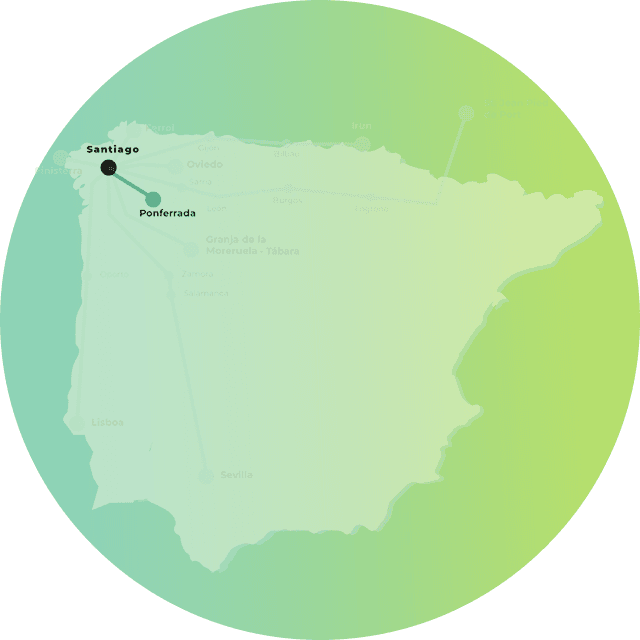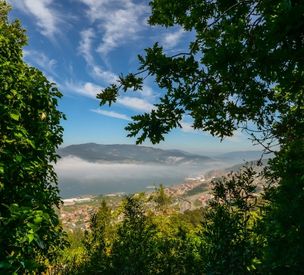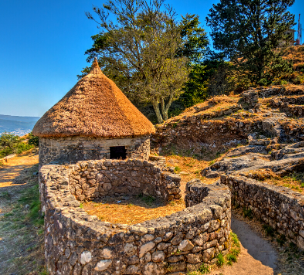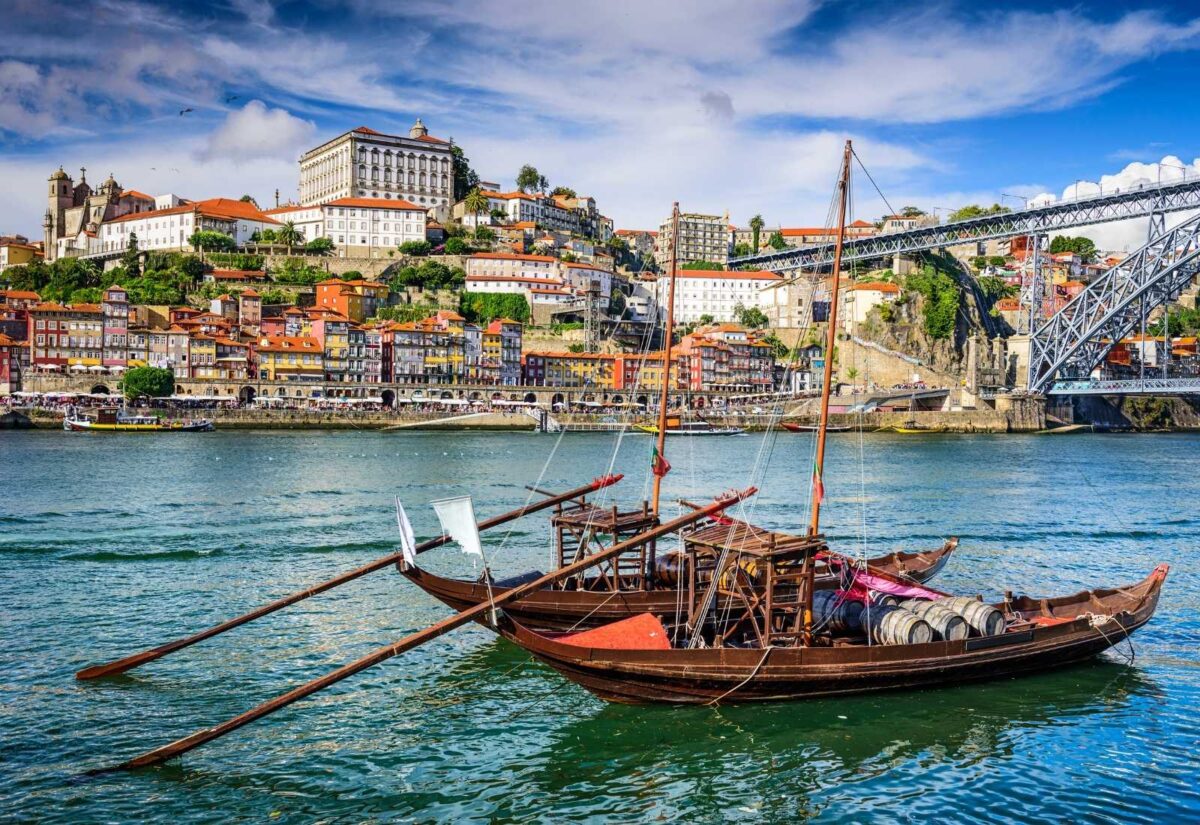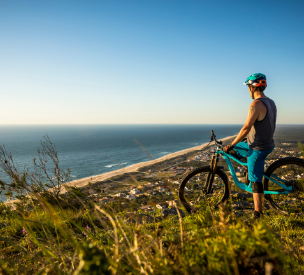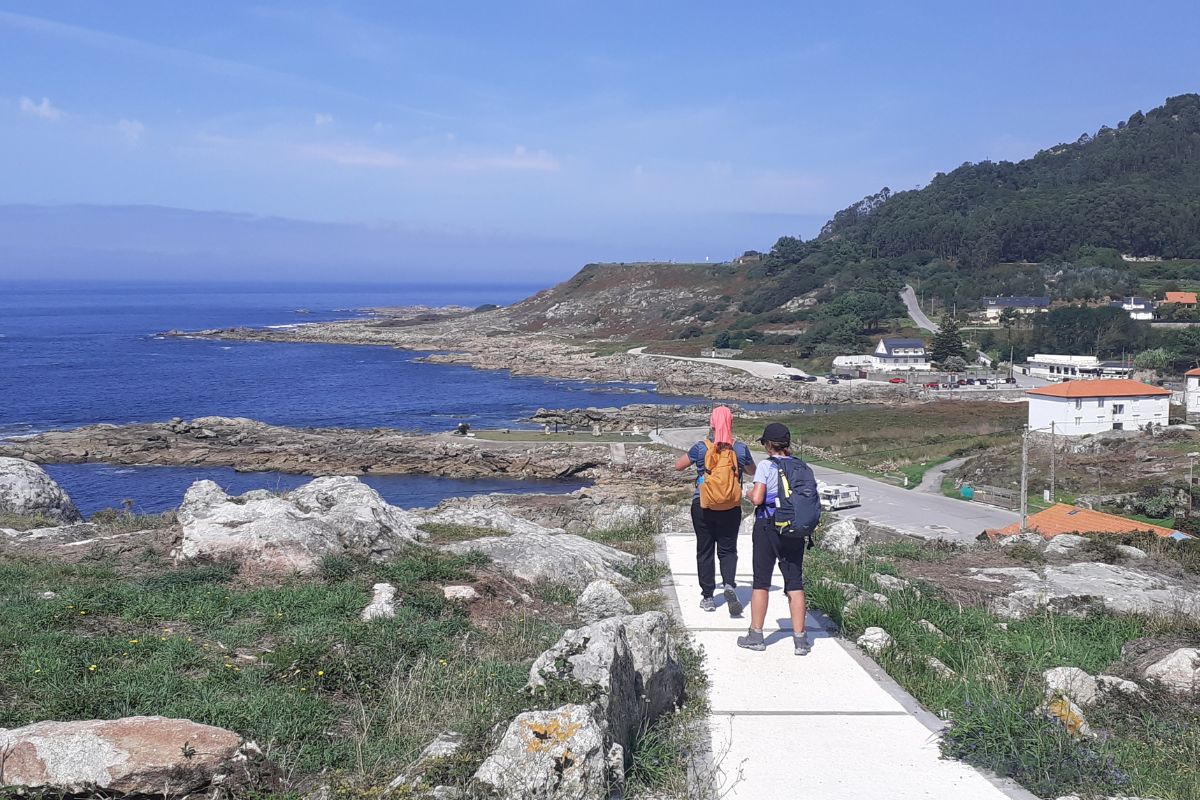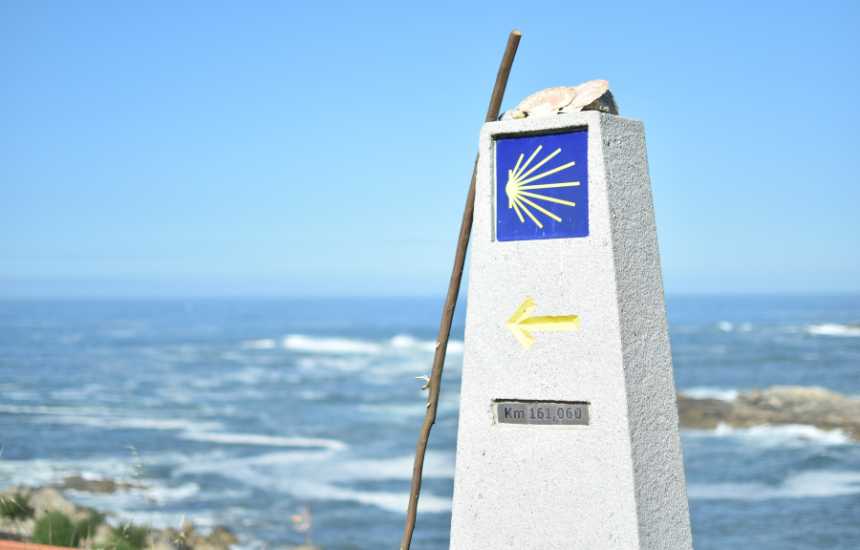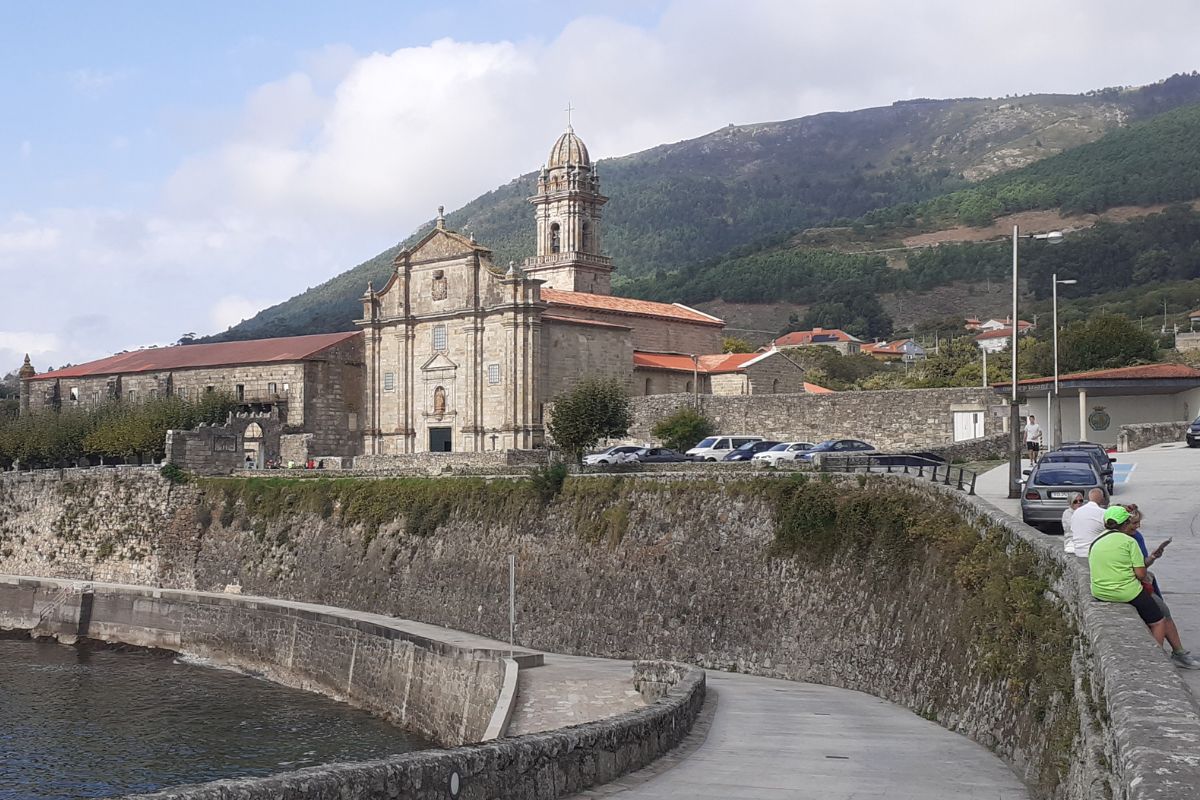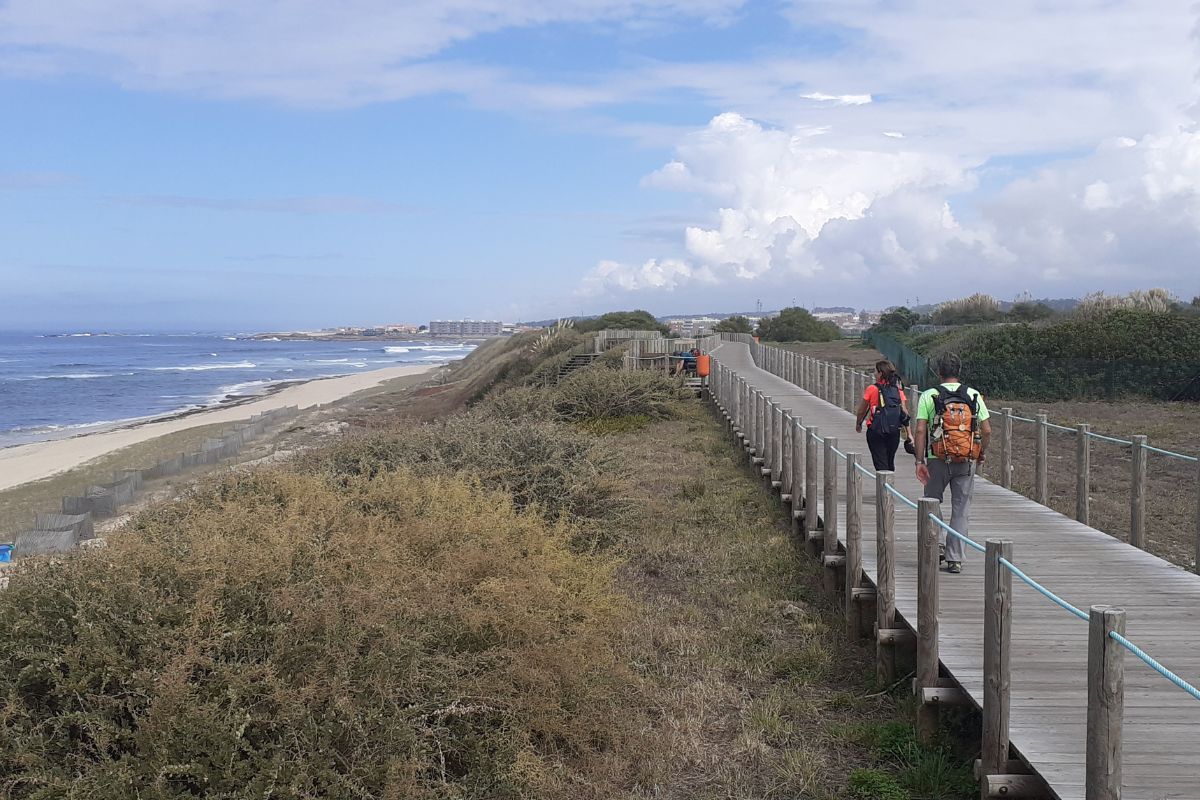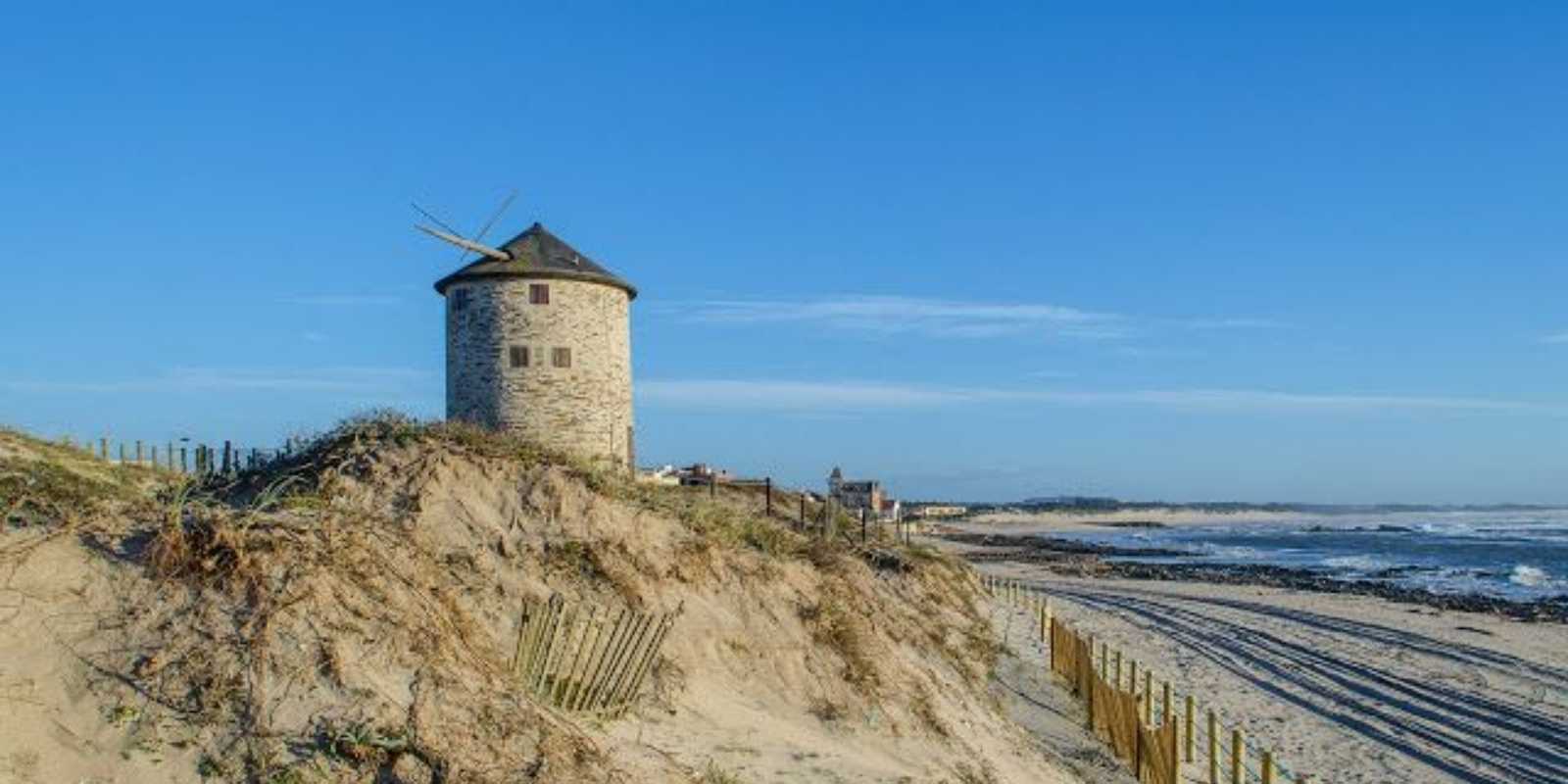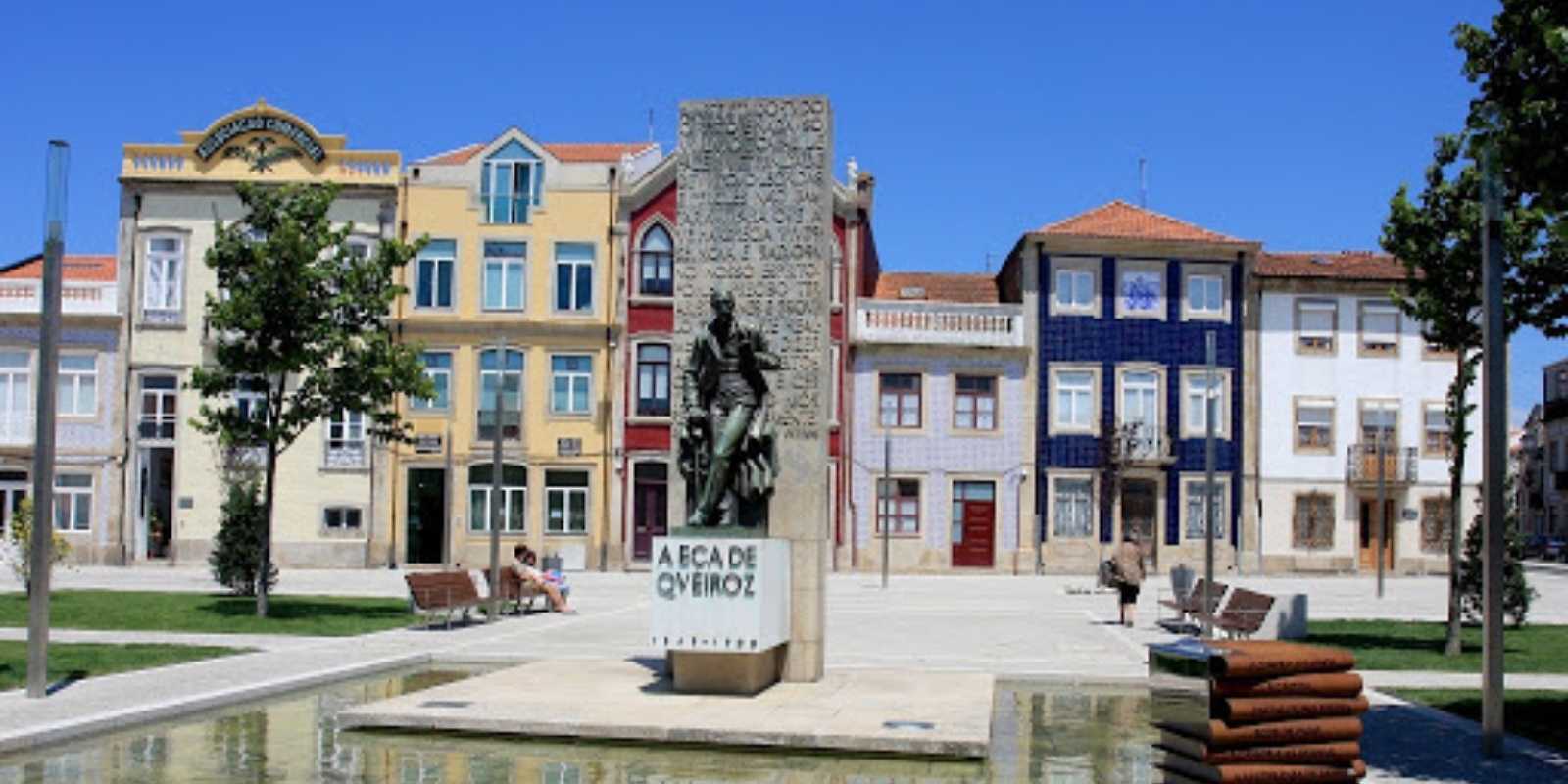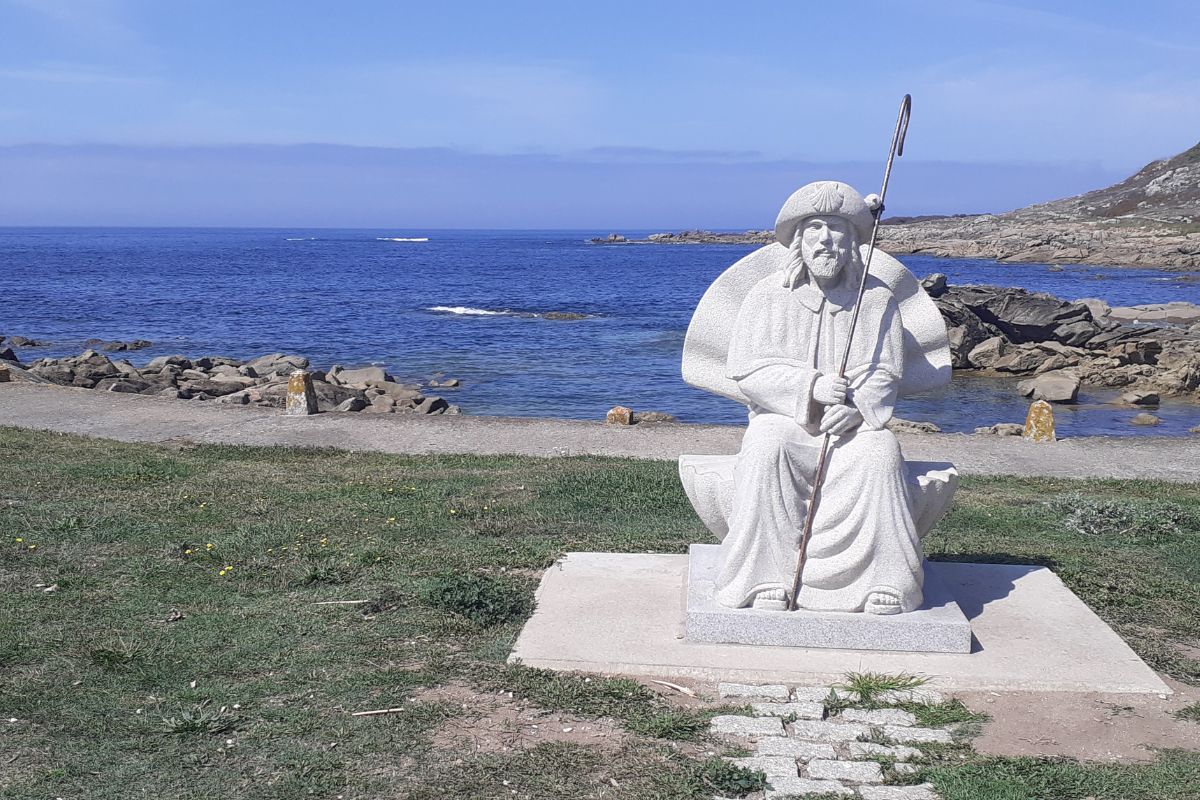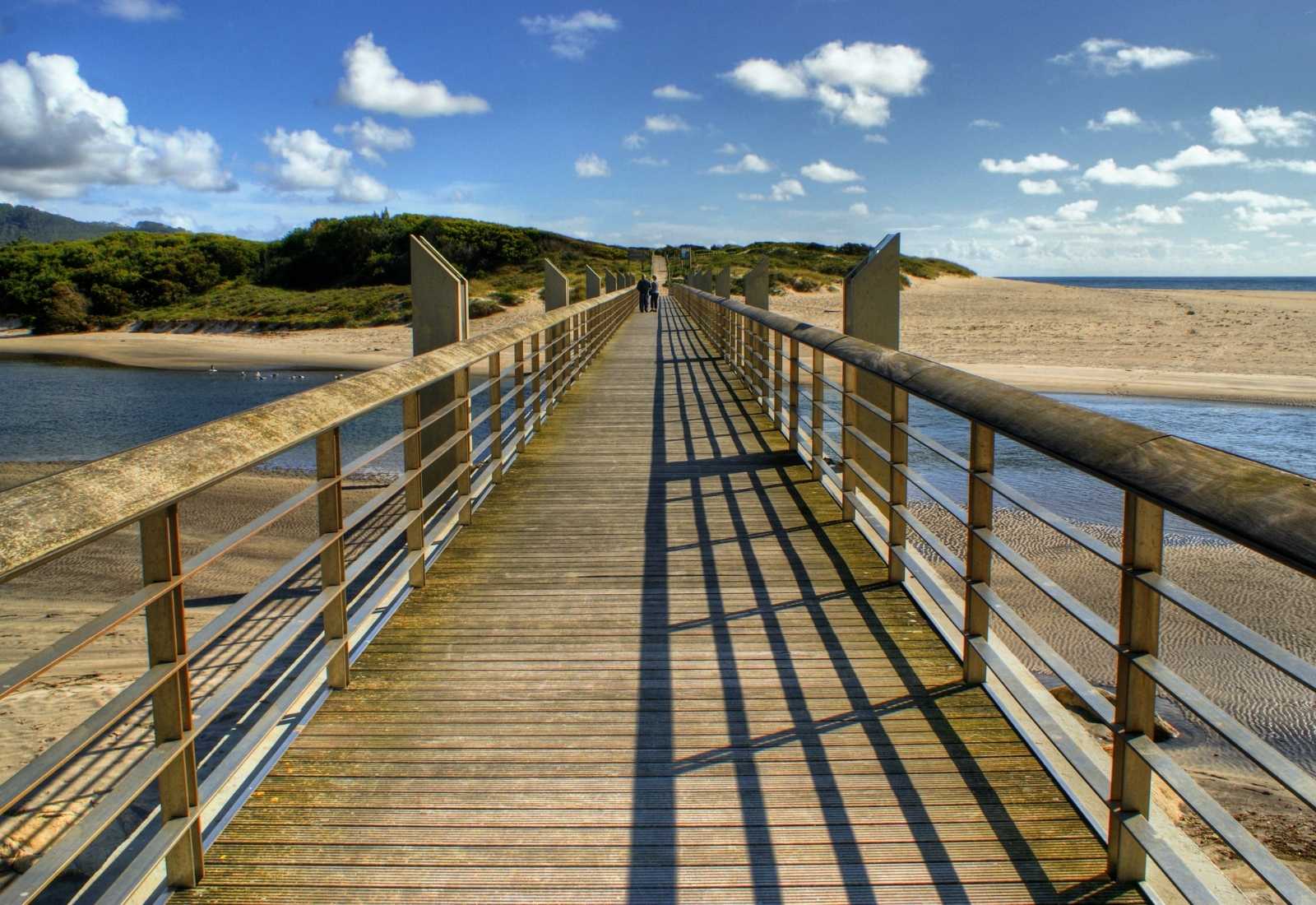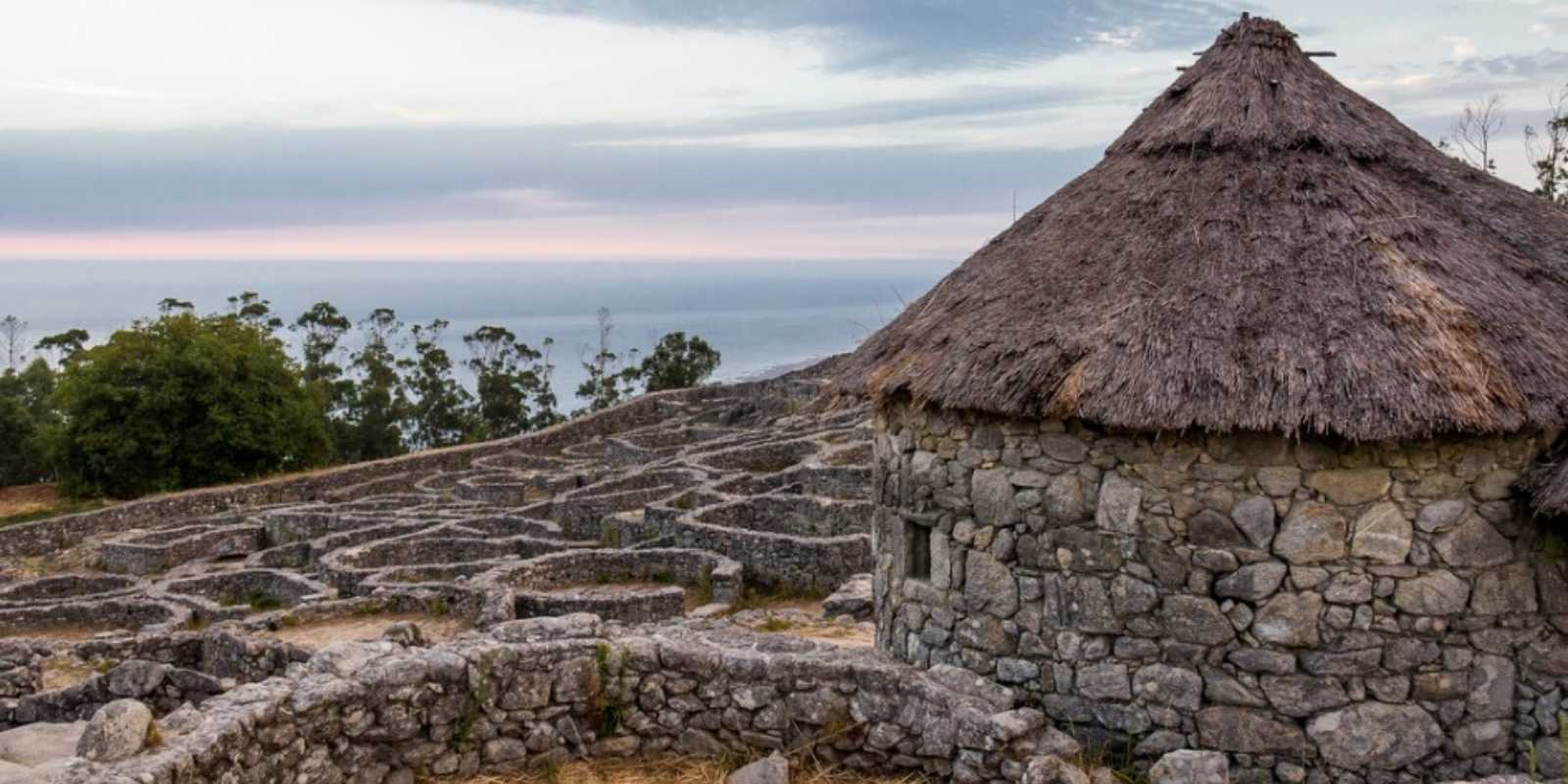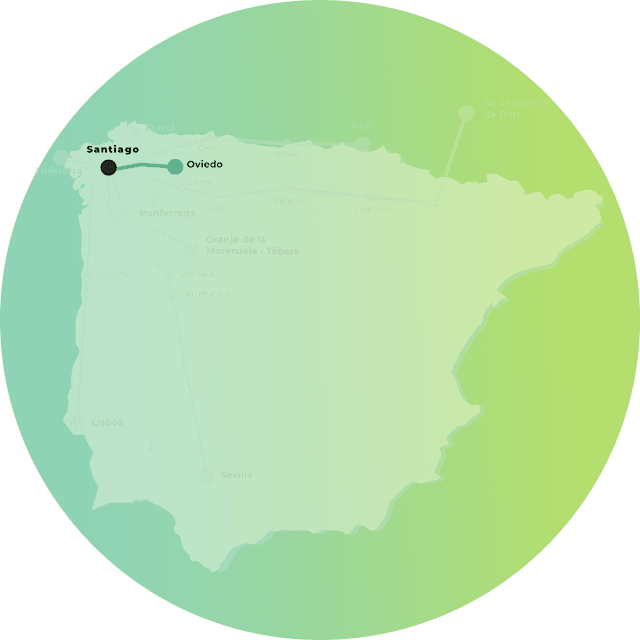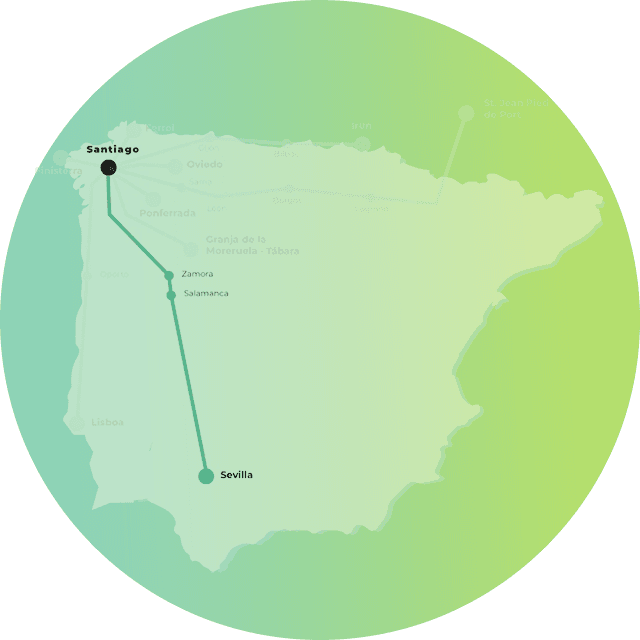The Portuguese Way along the Coast
The Camino de Santiago along the shores of the Atlantic Ocean.
The Portuguese Way of the Camino de Santiago along the coast is a highly attractive option, running parallel to the ocean through Portuguese cities such as Porto, Viana do Castelo, Vila Praia de Âncora, A Guarda, Baiona, and Vigo.
The Portuguese Way along the Coast is the perfect route to explore the coastal surroundings of northern Portugal and southern Galicia. The sea will be your travel companion on this adventure, offering stunning views of endless beaches, estuaries, cliffs, as well as pleasant stays in charming coastal towns and villages.
- The Camino de Santiago along the shores of the Atlantic Ocean.
- Our journeys of the Portuguese Way along the coast
- Map of the Portuguese Way along the Coast
- Information about the Portuguese Way along the coast
- Where to start the Portuguese Way along the coast?
- Stages of the Portuguese Way along the coast
- History of the Portuguese Coastal Route
- Frequently asked questions about the Portuguese Way along the coast
- Posts related to the Portuguese Way along the coast
- Other routes of the Camino de Santiago
Our journeys of the Portuguese Way along the coast
Map of the Portuguese Way along the Coast
The map shows the complete route of the Portuguese Way alkong the Coast, from Porto, Portugal, to Santiago de Compostela, Galicia. This historic pilgrimage route, approximately 270 km and 12 stages long, passes through iconic cities and towns such as Viana do Castelo, Caminha, Baiona, Vigo, and Padrón.
At the bottom, the elevation profile of the route is displayed, known for its gentle slopes and its path near the Atlantic coast, passing through beautiful coastal landscapes and along major rivers like the Duero and Miño. Each stage offers a unique experience, with a blend of Portuguese and Galician landscapes and a rich cultural heritage, making it an unforgettable spiritual and physical journey.
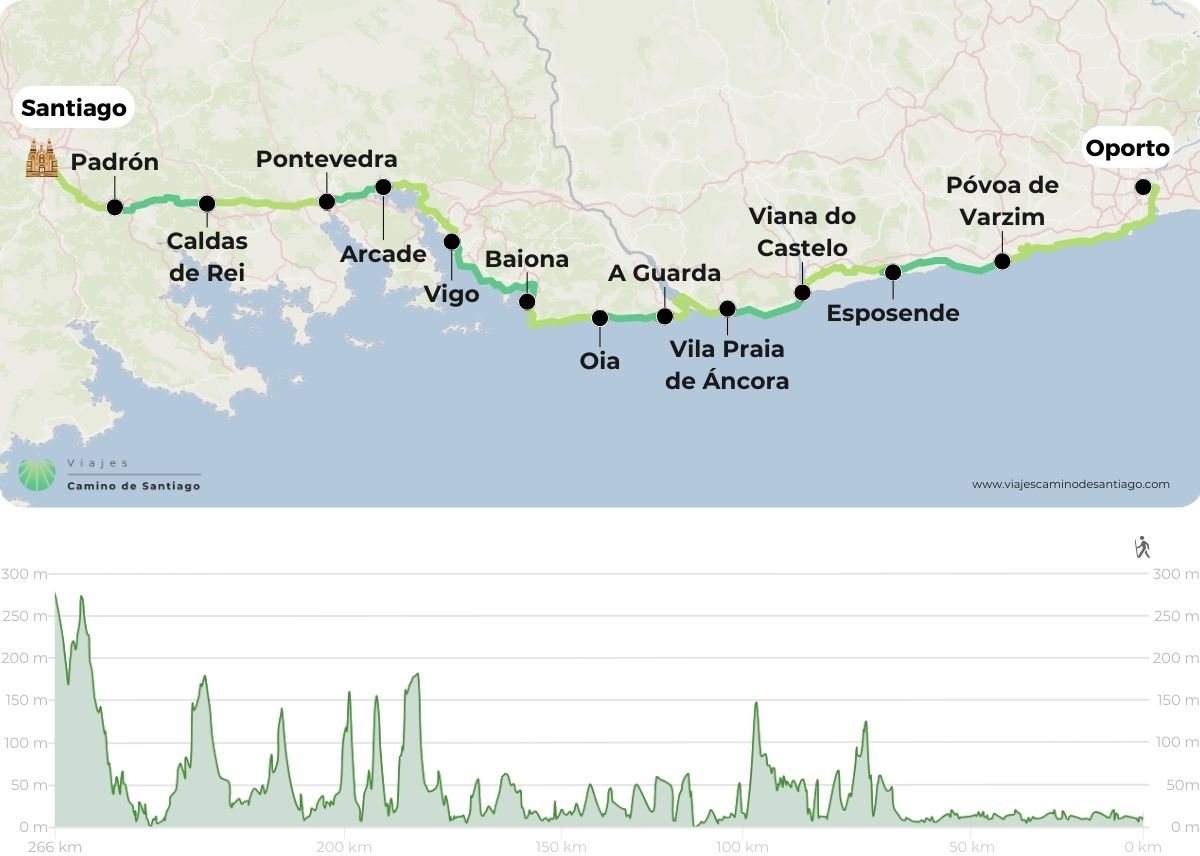
Information about the Portuguese Way along the coast
Why choose the Portuguese Way along the Coast?
The Portuguese Coastal Camino gifts you with continuous landscapes of dunes, beaches, and coastlines.
The Portuguese Coastal Camino is an easy route that suits all types of pilgrims. In addition to its undeniable scenic beauty, it is the perfect route to do at any time of the year. In the summer, you can enjoy the beach atmosphere of the coastal towns, taking a dip here and there; while in the winter, it’s the ideal route for those wanting to escape the crowds and hustle of more frequented paths.
Not all Jacobean routes can offer you a swim at the beach after each stage. The sea breeze on your face, sun, and sand—what more could you ask for?
What to see on the Portuguese Way along the coast?
Where to start the Portuguese Way along the coast?
From Porto
The Portuguese Coastal Way from Porto, the second largest city in Portugal, is a delight for the senses. Starting from the mouth of the Douro River, the route stretches a total of 270 km over 12 stages, passing through the entire Portuguese coastline until it enters Galicia, crossing the mouth of the Miño River. Once in Galicia, the Camino continues, leaving behind important cities and seaside towns in the province of Pontevedra, such as A Guarda, Oia, Baiona, and Vigo, until it converges with the traditional Portuguese Way in the town of Redondela, where they continue together to Santiago de Compostela. Moreover, this is a very straightforward route, featuring gentle terrain with minimal elevation changes, making it ideal for cycling as well.
From A Guarda
The Galician section of the Portuguese Coastal Way begins in the town of A Guarda, at the mouth of the Miño River. From here to Santiago de Compostela, there are a total of 150 km that can be covered in 8 stages. The route crosses the province of Pontevedra from south to north, passing through charming fishing villages like A Guarda, Oia, and Baiona, as well as important cities such as Vigo and Pontevedra. The Portuguese Coastal Way from A Guarda is an easy and physically undemanding route, with minimal elevation changes, making it ideal for any time of the year.
From Vigo
If you want to enjoy beaches, stunning landscapes, and the best seafood, the Portuguese Coastal Way from Vigo in 5 stages is perfect. Starting from this city, which offers breathtaking views of the Cíes Islands and delicious oysters at the Mercado da Pedra, along the way you’ll experience beautiful beaches and a rich cultural heritage, with stops such as the Soutomaior Castle, the city of Pontevedra, and the A Barosa mill complex. It’s a peaceful route, ideal for disconnecting and immersing yourself in the history, gastronomy, and legends of Galicia.
Stages of the Portuguese Way along the coast
The Portuguese Coastal Way of Santiago is a pilgrimage route full of history, spirituality, and natural beauty. Over approximately 270 kilometers in 12 stages, from Porto to Santiago de Compostela, the path takes you through breathtaking maritime landscapes, charming fishing villages, and monuments full of meaning. Each stage offers a unique experience, from the coasts of Portugal to the green lands of Galicia, crossing beautiful rivers and peaceful beaches. Through these links, you will discover the main stages, their distances, points of interest, and useful tips to make the most of this unforgettable adventure.
Keep in mind that, when you reach Redondela, before Arcade, the Portuguese Coastal Way connects with the inland Portuguese route, so you will follow the last 4 stages of the traditional Portuguese Way.
History of the Portuguese Coastal Route
The itinerary of the Portuguese Coastal Way is a route officially recognized only relatively recently. However, the history of this path is as old as that of the original Portuguese Way.
Birth of this route
The history of this route begins in the 9th century, after the discovery of the remains of Saint James and the start of the pilgrimage phenomenon that began to spread across Europe. As those most interested in the history of the Iberian Peninsula will know, in the 12th century, the Kingdom of Portugal gained its independence from the Kingdom of León, with Alfonso I of Portugal being proclaimed king. This, combined with the strong Christian devotion of the Portuguese population, led to the consolidation of the Portuguese roads to Santiago de Compostela. Furthermore, the existence of Roman roads was utilized for the establishment of the pilgrimage routes.
Golden Age
From Portugal, many illustrious figures embarked on the pilgrimage to Santiago de Compostela, including Isabel of Portugal, the Holy Queen, King Manuel I of Portugal in the 16th century, and even the wealthy Florentine Cosimo de’ Medici. Naturally, another factor that helped consolidate the coastal variant of the Portuguese Way was the arrival of many pilgrims by sea, who disembarked at the main Portuguese ports and began their pilgrimage from there.
Centuries of Decline
Like other Jacobean routes, from the late 16th century it underwent a period of decline and decadence, due to the political, social, and religious tensions in Europe during the 16th and 17th centuries.
The Great Success Today
The previous crises have long been overcome, and today, the route is consolidated in the 21st century as the third most traveled Jacobean route on the Peninsula, with constant and unstoppable growth.
Frequently asked questions about the Portuguese Way along the coast
The Portuguese coastal route, or the Portuguese Coastal Way, with 12 stages and 270 kilometers from Porto, is not considered very difficult. Its first section, practically the entire north of Portugal, is very flat, as it runs along the footbridges of the Ecovia Litoral Norte. In Galicia the relief is a little bumpy, but it does not present large unevenness.
The Portuguese coastal route, the Camino Portugues por la Costa, is a route with about 270 km, generally divided into 12 stages. Therefore, divided like this, its duration is 12 days to complete the entire Camino on foot.
Each stage would be the distance you travel in one day, from the starting location to the end of the walk, where you will spend the night. The stages can vary in distance and difficulty, and it is important to note that they can be adjusted according to your pace and physical condition. Some pilgrims choose to divide certain long or difficult stages, or lengthen those that are shorter or easier to walk. It all depends on having a place to sleep.
The Portuguese Coastal Way offers a unique experience for pilgrims, with a combination of stunning natural landscapes and charming coastal towns. Throughout its 270 kilometers, from Porto to Santiago de Compostela, you will find a wide variety of places that will make your pilgrimage unforgettable.
- Oporto: Starting point of the route, Porto is a vibrant city famous for its architecture, its UNESCO World Heritage-listed old town, and, of course, its Port wine cellars.
- Vila do Conde: This charming coastal town is known for its fishing port and beaches. You can also visit the Vila do Conde aqueduct and the Santa Clara Convent.
- Viana do Castelo: Considered one of the most beautiful cities in Portugal, Viana do Castelo stands out for its imposing Basilica of Santa Luzia, from which you can enjoy spectacular views of the Atlantic coast.
- Caminha: Located at the mouth of the Miño River, this picturesque town offers incomparable natural beauty. From here, you will cross into Galicia, entering Spain.
- Baiona: In Galicia, Baiona is a popular destination among pilgrims for its history and beauty. Here you can visit the Monterreal Fortress and enjoy the views of the Cíes Islands.
- Vigo: The largest city in Galicia on the route, Vigo is famous for its port and lively urban atmosphere. If you have time, you can explore the Atlantic Islands National Park, a natural paradise just a few kilometers from the coast.
- Pontevedra: This city is famous for its well-preserved old town and the Church of the Pilgrim Virgin, one of the symbols of the Camino de Santiago.
- Caldas de Reis: Famous for its hot springs, Caldas de Reis is an ideal stop to relax in the middle of the pilgrimage. In addition, it offers a charming old town and the Umia River that runs through the city.
- Padrón: Known for its connection to the legend of the translation of the body of the Apostle Santiago. Padrón is famous for its peppers and its historic Roman bridge, as well as the church of Santiago de Padrón.
- Santiago de Compostela: The goal of all paths, with its majestic Cathedral of Santiago, is the place where your pilgrimage ends and you can obtain the Compostela.
And of course, lots of beach!
The Portuguese Camino de Santiago along the Coast is divided into 12 stages. It begins in Porto and has 270 kilometers to go to Santiago de Compostela. It must be taken into account that this distance may vary depending on the possible variants or complementary and alternative paths that the pilgrim decides to take during the route.
Each stage would be the distance you travel in one day, from the starting location to the end of the walk, where you will spend the night. The stages can vary in distance and difficulty, and it is important to note that they can be adjusted according to your pace and physical condition. Some pilgrims choose to divide certain long or difficult stages, or lengthen those that are shorter or easier to walk. It all depends on having a place to sleep.
The total kilometers of the Portuguese Way along the Coast are about 270 km from Porto, its beginning. It must be taken into account that this distance may vary depending on the possible variants or complementary and alternative paths that the pilgrim decides to take during the route.
Posts related to the Portuguese Way along the coast
Other routes of the Camino de Santiago
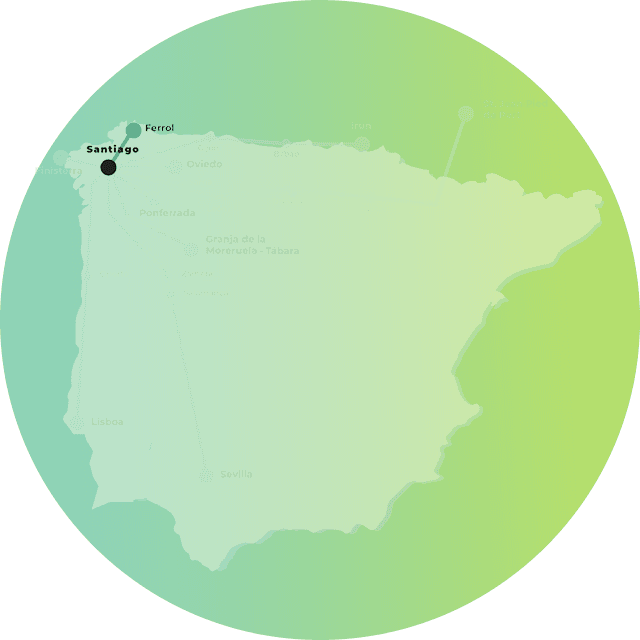
English Way
From Ferrol to Santiago de Compostela. Delve into the culture of villages of great military, naval and historical importance. 5 Etapas | 125 km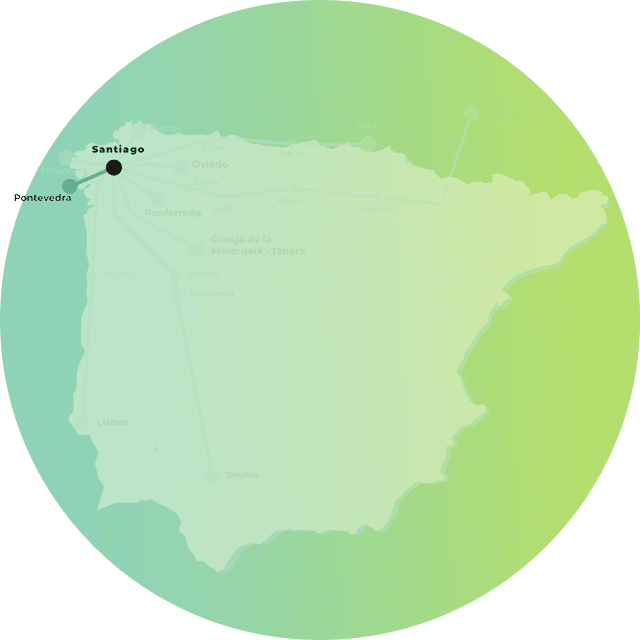
Father Sarmiento Way
The Father Sarmiento Way links Pontevedra to Santiago de Compostela, offering a scenic journey through beautiful landscapes. 6 stages | 142 km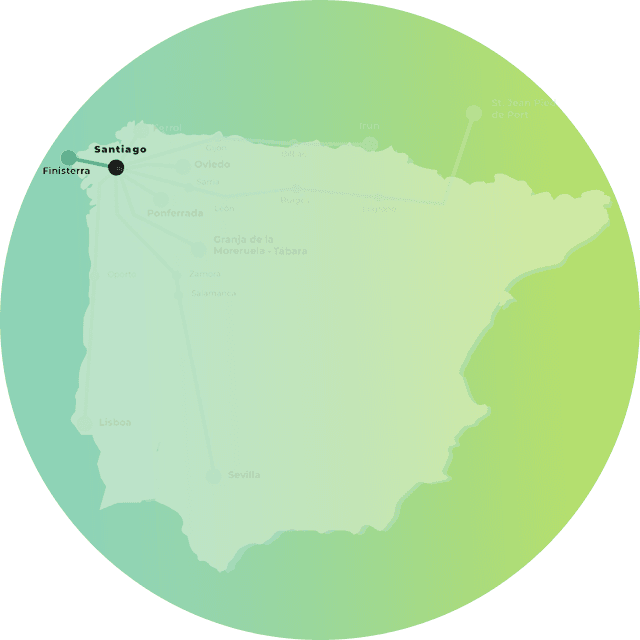
Finisterre and Muxía Way
From Santiago de Compostela to Muxía. A mystical and spiritual journey to the ends of the Earth 5 stages | 120 km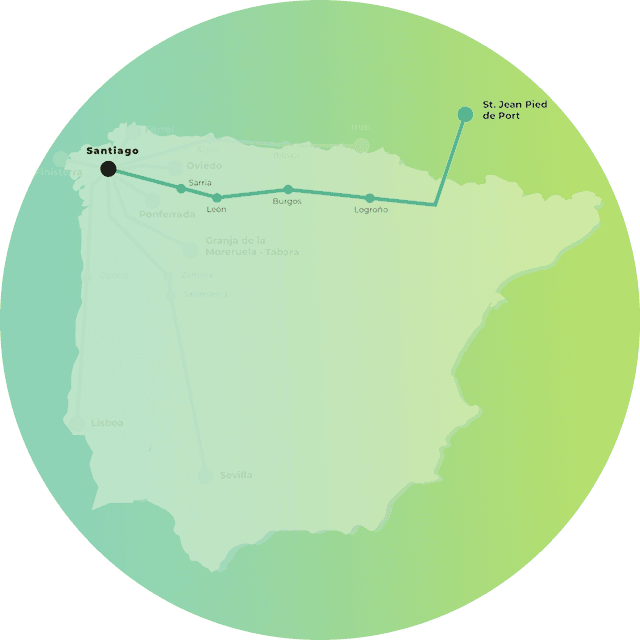
French Way
From Saint-Jean-Pied-de-Port to Santiago, trace Charlemagne’s path through the Pyrenees and trek 800 km on the French Way. 33 stages | 768 km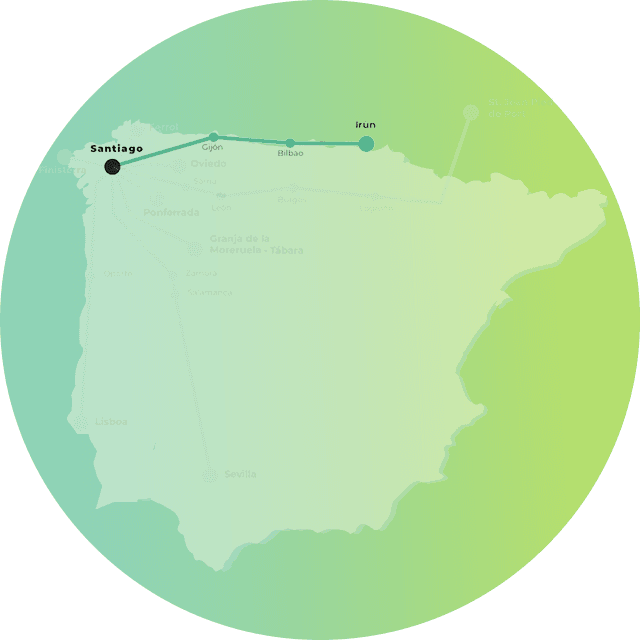
Northern Way
From Santiago de Compostela to Muxía. An unforgettable experience with breathtaking scenery 34 Stages | 820 km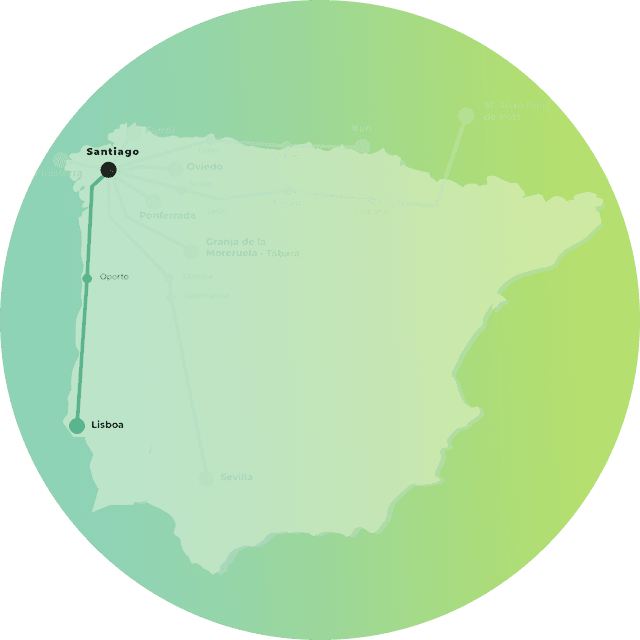
Portuguese Way
Starts in Lisbon and leads to Santiago de Compostela, offering a scenic journey through charming towns, coastal views, and culture. 27 stages | 620 km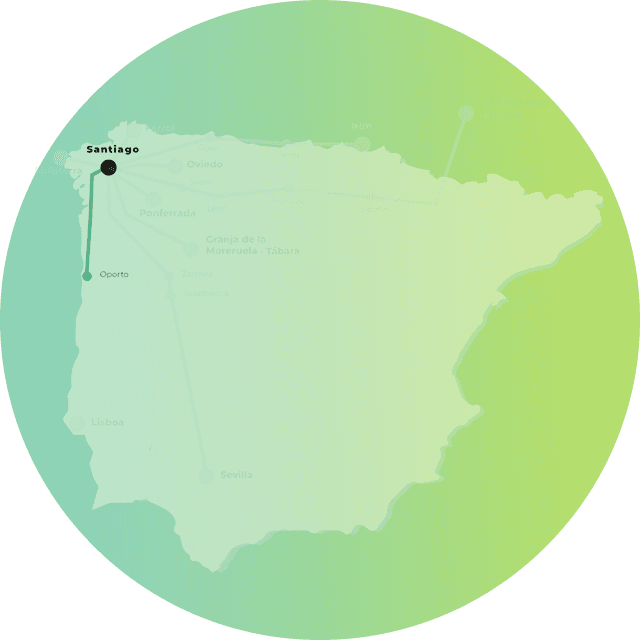
Portuguese Way along the coast
From Oporto to Santiago de Compostela. Total 194 km - 8 stages 8 Stages | 194 km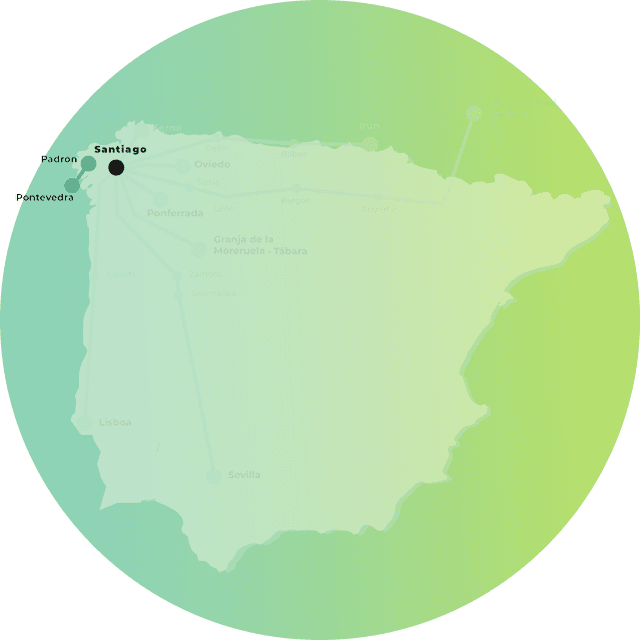
Portuguese Way: spiritual variant
From Pontevedra to Padrón. Total 81 km - 3 stages 3 stages | 81 km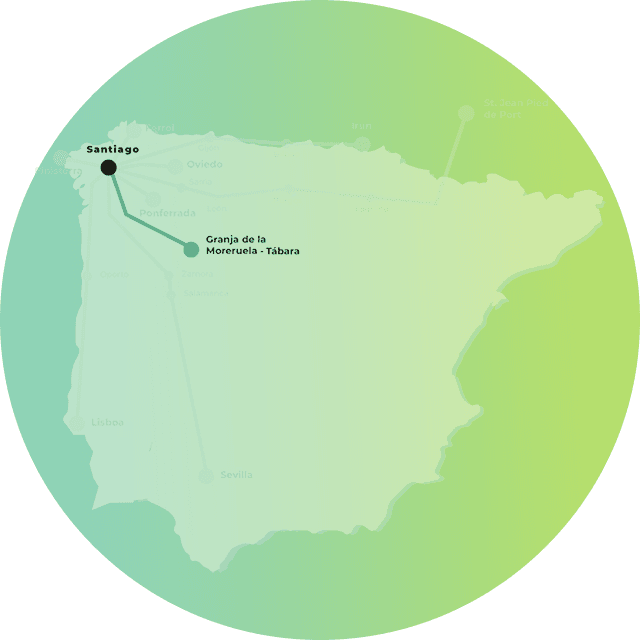
Sanabrian Way
From Granja de Moreruela to Santiago de Compostela. Total 365 km - 13 stages 13 stages | 365 km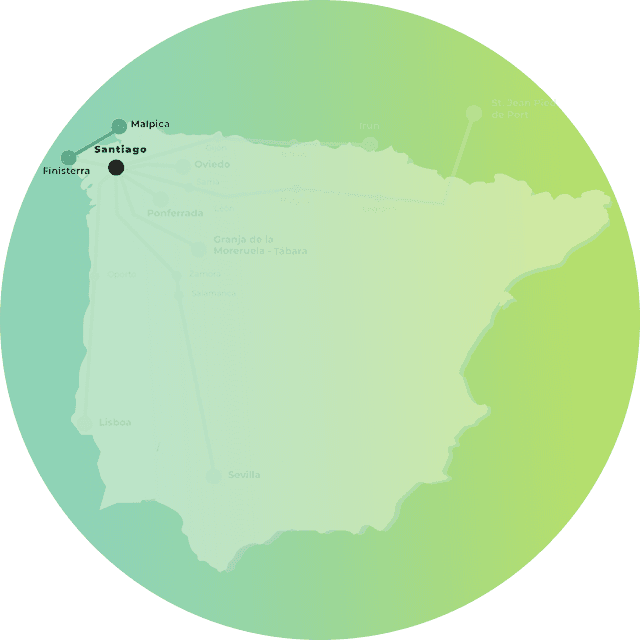
Way of the Lighthouses
From Malpica to Finisterre. A 200-kilometer journey along the coast and through the wildest of nature 8 stages | 195 km